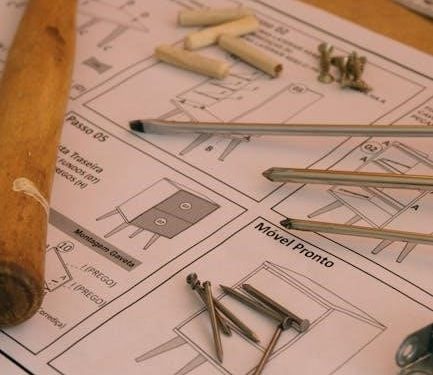Automatic gates are a convenient and secure way to control access to your property, but they rely on electricity to function. During power outages or mechanical failures, knowing how to open your automatic gate manually becomes essential. This skill ensures you can still enter or exit your property without waiting for electricity to be restored or repairs to be made.
Manual operation of an automatic gate involves disengaging the motor and using a release mechanism, which is typically designed for such situations. This feature allows you to bypass the automated system and operate the gate manually. Understanding how to perform this process safely and effectively is crucial for homeowners with automatic gates.
Whether you have a swing gate or a sliding gate, most modern systems include a manual release mechanism. This mechanism is usually located near the motor or control box and may require a key or specific procedure to activate. By familiarizing yourself with your gate’s manual release, you can ensure uninterrupted access to your property, even during unexpected power outages.
Learning how to open your automatic gate manually is a practical skill that combines safety and convenience. It not only helps you maintain control over your property but also prevents potential damage to the gate’s motor or components during emergencies. This guide will walk you through the steps to manually operate your automatic gate, ensuring you’re prepared for any situation.

Preparing for Manual Gate Operation
Before attempting to open your automatic gate manually, it is crucial to prepare properly to ensure safety and avoid damaging the gate or its components. Manual operation is typically required during power outages, mechanical failures, or other emergencies when the automated system is unavailable. Proper preparation involves understanding the gate’s mechanism, gathering necessary tools, and following safety guidelines. This section will guide you through the steps to prepare for manual gate operation effectively.
Understanding Your Gate’s Mechanism
The first step in preparing for manual operation is to understand how your automatic gate functions. Automatic gates operate using a motorized system that includes components such as actuators, gears, and control boxes. These components work together to open and close the gate automatically. However, most gates are designed with a manual override feature that allows you to bypass the motor and operate the gate manually when needed.
There are two primary types of automatic gates: swing gates and sliding gates. Swing gates open by pivoting on hinges, while sliding gates move along a track. Each type has a different manual release mechanism, so it is essential to familiarize yourself with the specific design of your gate. Understanding the mechanism will help you locate the manual release and operate the gate safely.
Locating the Manual Release Mechanism
The manual release mechanism is a critical component that allows you to disengage the motor and operate the gate manually. This mechanism is usually located near the motor or control box and may vary depending on the gate’s brand and model. Some gates have a lever or a keyhole, while others may require a specific tool to activate the release.
To locate the manual release mechanism, refer to your gate’s user manual or look for labels on the motor or control box. If you cannot find the manual release, it may be hidden for security reasons. In such cases, you may need to remove a cover or panel to access the mechanism. Be sure to take note of its location so you can access it quickly during an emergency.
Gathering Necessary Tools
While some gates can be opened manually without tools, others may require specific equipment to activate the release mechanism. Common tools include a manual release key, an Allen wrench, or a screwdriver. If your gate requires a key, ensure it is readily available and stored in an accessible location. Avoid keeping the key in a place where it could be lost or stolen.
In addition to tools, it is a good idea to have a flashlight or other light source on hand in case you need to work on the gate during a power outage. A pair of gloves can also be helpful to protect your hands while handling the gate or its components.

Disconnecting the Power Supply
Before attempting manual operation, it is essential to disconnect the power supply to the gate motor. This step ensures your safety and prevents accidental activation of the motor while you are working on the gate. Locate the power source, which is usually a circuit breaker or a switch near the control box, and turn it off. If you are unsure how to disconnect the power, consult your gate’s user manual or contact a professional.
Even after disconnecting the power, the gate’s motor may still have residual power or stored energy. Exercise caution when handling the motor or its components to avoid injury.
Ensuring Safety

Safety should always be your top priority when preparing for manual gate operation. Automatic gates are heavy and can cause serious injury if they are not handled properly. Before attempting to open the gate, ensure that the area around the gate is clear of people, pets, and obstacles. If the gate is damaged or unstable, do not attempt to open it manually, as this could lead to further damage or injury.
Wear appropriate protective gear, such as gloves and safety glasses, to protect yourself from sharp edges or moving parts. If you are unsure about any aspect of the process, consider seeking assistance from a professional technician who is experienced in handling automatic gates.

Testing the Manual Release Mechanism
Once you have located and accessed the manual release mechanism, test it to ensure it is functioning properly; If you are using a key, insert it into the keyhole and turn it to disengage the motor. For levers or other types of mechanisms, follow the instructions provided in your gate’s user manual. After disengaging the motor, attempt to push or pull the gate manually to ensure it moves smoothly and without resistance.
If the gate is difficult to move, it may indicate a problem with the mechanism or the gate’s alignment. In such cases, it may be necessary to lubricate the hinges or tracks to reduce friction. However, avoid applying too much force, as this could damage the gate or its components.
Maintaining the Manual Release Mechanism
Regular maintenance of the manual release mechanism is essential to ensure it is always functional when needed. Check the mechanism periodically to ensure it is free of dirt, rust, or other obstructions. If you notice any issues, address them promptly to avoid complications during an emergency.
In addition to maintaining the release mechanism, inspect the gate’s hinges, tracks, and other moving parts regularly. Lubricate these components as needed to keep the gate operating smoothly and extend its lifespan.
Seeking Professional Assistance
If you are uncomfortable or unsure about any aspect of manual gate operation, do not hesitate to seek assistance from a professional. A qualified technician can provide guidance, perform maintenance, and address any issues with your gate’s mechanism. This is especially important if your gate is heavy, large, or has complex features that require specialized knowledge to operate manually.













































